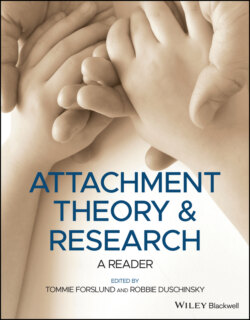Читать книгу Attachment Theory and Research - Группа авторов - Страница 28
A Distinction Between Fear (or Alarm) and Anxiety15
ОглавлениеIt is stated in the introduction to this essay that it is useful to distinguish between fear and anxiety. On the one hand, it is posited that we try all times to withdraw or escape from a situation or object that we find alarming, and on the other, we try to go towards and to remain with some person or in some place that makes us feel secure. The first type of behaviour is commonly accompanied by a sense of fright or alarm. What is experienced when the second type of behaviour is implicated, it is suggested, is best termed ‘anxiety’.
Applied in the context of the theory of homeostasis now proposed this means that, whenever a person is focussing attention on the source of some homeostatic disturbance (or the threat of it) and on how to avoid it, what he feels is best termed ‘fear’ or ‘alarm’; and that, whenever a person is focussing attention on restoring homeostasis and the difficulties of doing so, what he feels is best termed ‘anxiety’. Whilst it is evident that both types of feeling can be present together, not infrequently one or the other predominates. The belief that in the two situations there is a real distinction in feeling is supported by the fact that the terms proposed have roots the meaning of which shade in two quite different directions. Thus, the English word ‘fear’ has cousins in old high German and old Norse with meanings that indicate ‘ambush’ and ‘plague’; whilst alarm derives from sixteenth century Italian meaning ‘to arms’ and implies, therefore, ‘surprise attack’ (Onions, 1966).16 By contrast, ‘anxiety’ has cousins in Greek and Latin in meanings that center on grief and ‘sadness’; and is related to the German ‘Angst’ that, in addition to signifying dread, could in the seventeenth century also mean ‘longing’. In addition ‘anxiety’ has as further cousins both ‘anguish’ and ‘anger’ (Lewis, 1967).17 Insofar as separation from an attachment figure is accompanied by anxiety and often also by anger, and loss by anguish and despair, the usage is in keeping with its historical roots. It is also in keeping with Freud’s belief that ‘missing someone who is loved and longed for…’ is ‘…the key to an understanding of anxiety.’18
